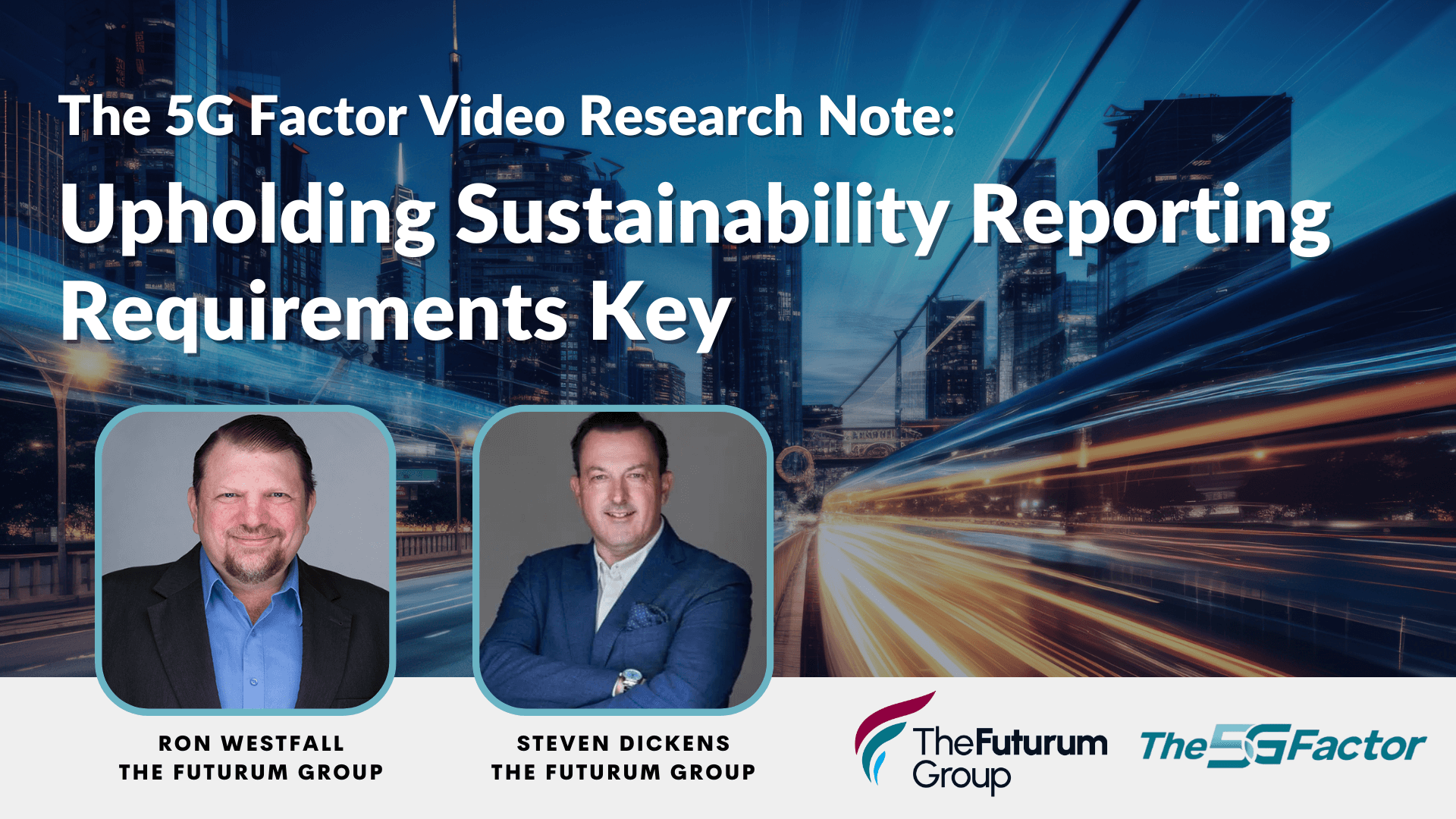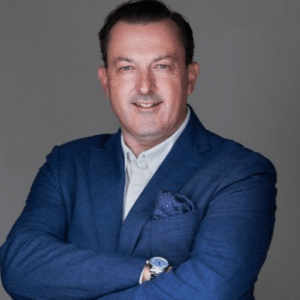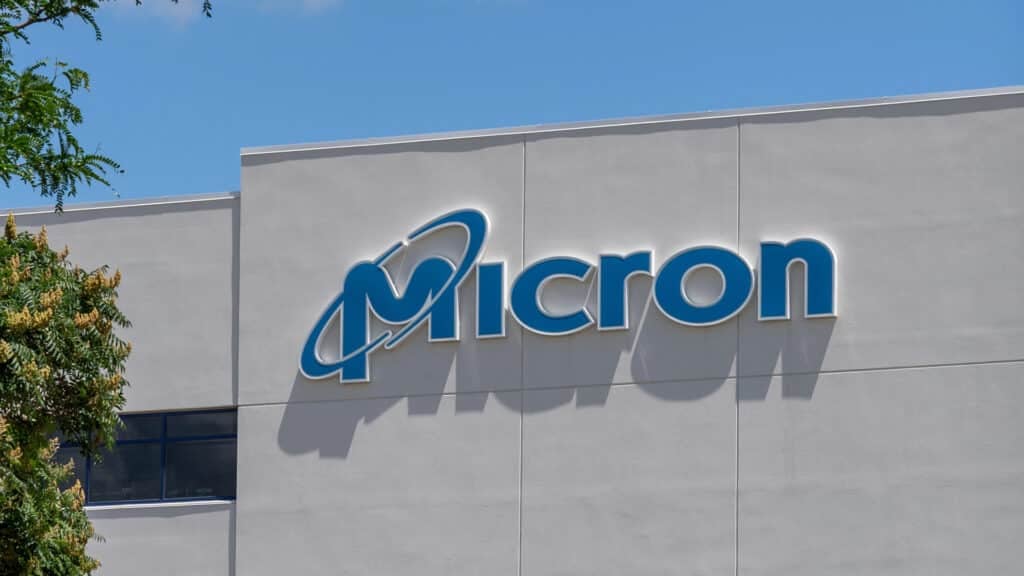In this vignette of The 5G Factor, Ron Westfall and Steven Dickens assess why fulfilling ESG reporting requirements, such as embedded in the Global Reporting Initiative (GRI) and Sustainability Accounting Standards (SASB), can burnish the sustainability credentials of CSPs in their 5G network builds.
The discussion highlighted:
CSP 5G Sustainability Fulfillment Aligns with Global Guidelines. By meeting ESG reporting requirements, such as embedded in the Global Reporting Initiative (GRI) and Sustainability Accounting Standards (SASB), CSPs can burnish and equally important market the sustainability credentials of their 5G network builds. We see Vodafone, for instance, is committed to supporting the delivery of the UN Sustainable Development Goals (SDGs) across its sustainability initiatives. Specifically, Vodafone’s Planet pillar targets reducing environmental impact by reaching net zero emission across its entire value chain, aiding customers in reducing their own carbon emissions by 350 million tons by 2030, and driving action to reduce device waste and progressing against its own target to reuse, resell, or recycle 100% of network waste.
Watch The 5G Factor show here:
Or, you can watch the full episode here, and while you’re there, subscribe to our YouTube channel.
Listen to the full episode here:
If you’ve not yet subscribed to The 5G Factor, hit the ‘subscribe’ button while you’re there and you won’t miss an episode.
Disclosure: The Futurum Group is a research and advisory firm that engages or has engaged in research, analysis, and advisory services with many technology companies, including those mentioned in this article. The author does not hold any equity positions with any company mentioned in this article.
Analysis and opinions expressed herein are specific to the analyst individually and data and other information that might have been provided for validation, not those of The Futurum Group as a whole.
Transcript:
Ron Westfall: What do you see out there that are the top market shapers in terms of 5G sustainability landscape? What do you see the mobile operators out there doing that is of note?
Steven Dickens: Ron, you’ve made some really good points there. I think we’ve seen the macro environment impacting on ESG pledges. And we’re hearing a bit less about that from many vendors in lots of different industries. But I think Telco’s staying the course here. I believe the 5G driven sustainability progress requires digital operations platforms that support the cloud enabled agility and flexibility. This includes distributing data workloads across cloud environments according to the requirements of those CSPs as well as using DevOps frameworks to assure more flexibility and energy management.
One of the things that stood out for me recently was a recent Capgemini research institute report. And I’m looking here at my notes to make sure I get the title of it right. We’ll put that down in the show notes. The report was Networks on Cloud: A Clear Advantage. And that report claims that over half of telecom’s network capacity will be totally cloud native within the next three to five years. Pretty aggressive timeline, but I certainly subscribe to that sort of findings. The report also indicates that operators will spend roughly in the region of 206 million annually on that cloud transformation over the next five years.
We’ve seen a big focus from some of the hyperscalers and some of the cloud native vendors on the Telco market to try and capture some of that spend. But really, the way I’d summarize this is organizations are getting in early on a shift to cloud native and they’re most likely to realize value in the terms of economics and environmental sustainability. It not only hits their goals, but it hits their FinOps goals as well. And Telco Cloud is set to yield that sustainability benefits just from lower facility emissions, if nothing else. It’s reduced physical hardware, footprints, less power usage, auto-scaling of network on demand. One of the key characteristics of the cloud is the ability to spin it up and down, managing mobile towers, power consumption, and bringing AI and machine learning not only to the infrastructure, but to the operations. Plus, as we see mobile operators transition to 5G standalone networks, they’re deploying a 5G core, a 5G ram, a 5G mobile edge computing, and 5G transport domain technologies. And I think all of those are going to be critical to network wide 5G sustainability targets as we look forward.
Ron Westfall: I love that example that you cited, Steve, the Capgemini report. I think it definitely brings out a very important point, is that the cloud is going to play a huge role, hybrid cloud, as well as all the cloud distributed implementations that are going to be needed to make this happen. And with that in mind, Steve, what are you seeing in terms of the top 5G sustainability criterion? That is what do you see having the most priority across the mobile operator and 5G network decision makers out there?
Steven Dickens: Seeing meeting ESG reporting requirements is embedded in the global reporting initiative. We’re seeing that, it’s the GRI. And then another report and set of standards we’re seeing is sustainability accounting standards, SASB. CSPs can burnish and equally importantly market those sustainability credentials of their 5G builds as they look to win enterprises and the end users and consumers. One near and dear to my heart is Vodafone. I think they’re the fifth or sixth-largest company in my home country, so hold them dear to my heart. Vodafone’s committed to supporting the delivery of the UN sustainable development goals, or SDGs, across its sustainability initiatives. Specifically, Vodafone’s focused on its planet pillar targets, which were reducing environmental impact by reaching net-zero emissions across its entire value chain, aiding customers in reducing their own carbon emissions by 350 million tons by 2030, and driving action to reduce device waste, and progressing against its own target to reuse, resell or recycle 100% of network waste.
I think those are just critical. As we look at where everything’s going with climate change, where the market’s going, I think there’s a bold and sort of stick with what I know from Vodafone. We’re also seeing organizations and CSPs gain sustainability progress through encouraging individual units and corporate functions to integrate relevant 5G goals into their strategic sustainability and business planning while holding themselves accountable. This takes on paramount importance as 5G supports more concurrent connections and greater data throughput than the prior generations. That’s just going to result in more energy demands to scale much larger traffic loads and processing more intricate tasks with the … You look at that as the backdrop, it’s absolutely crucial that some of the CSPs, the vendors and everybody in this ecosystem focuses on their ESG goals.
Ron Westfall: Excellent point, Steven. And I endorse the shout-out to Vodafone, obviously a home country fave. And I see them definitely executing on their plan. And that’s why I think they definitely merit that attention. And in addition, I believe to help optimize 5G sustainability outcomes, the CSPs need to show commitment toward investing in clean renewable energy sources, such as solar and wind. And I believe through a specific pledge to use clean energy, I believe that CSPs can accelerate the fulfillment of their sustainability goals while also stimulating the energy efficiency of their 5G builds. And we already touched on 5G standalone as being essential, really, to advancing 5G sustainability. Now, for example, I’m going to turn back to T-Mobile because they were the first operator in the US to attain Renewable Energy 100 recognition as verified by The Climate Group. And T-Mobile achieved this because it’s quite simply invested in energy, renewable energy as a priority. And that included agreements with multiple virtual power plants and other initiatives that came together to allow them to attain that recognition.
That, I think, is important. Also, notably, for example, 36.3% of the Orange Group’s electricity originates from renewable sources. Orange, I think, definitely also gets a shout-out here. And they’re doing this by including sites using solar energy and also expanding the use of digital tools to protect biodiversity and achieving a 12.1 decrease in CO2 emissions across the scope one and two emission ranges. And we’ll touch more on what the scopes mean. And those scopes have been set forth by the 2001 Greenhouse Gas Protocol. And this is something that is driving a lot of this in terms of specifically carbon dioxide emission reductions, or CO2, and hitting them as part of an integral plan, a strategic plan to achieve the sustainability objectives.
Other insights from The Futurum Group:
5G Factor: T-Mobile, Vodafone, Orange, and Telefonica Shine at 5G Sustainability
MWC 2023: Vodafone Bakes a 5G Network Surprise in Raspberry Pi
Author Information
Ron is an experienced, customer-focused research expert and analyst, with over 20 years of experience in the digital and IT transformation markets, working with businesses to drive consistent revenue and sales growth.
He is a recognized authority at tracking the evolution of and identifying the key disruptive trends within the service enablement ecosystem, including a wide range of topics across software and services, infrastructure, 5G communications, Internet of Things (IoT), Artificial Intelligence (AI), analytics, security, cloud computing, revenue management, and regulatory issues.
Prior to his work with The Futurum Group, Ron worked with GlobalData Technology creating syndicated and custom research across a wide variety of technical fields. His work with Current Analysis focused on the broadband and service provider infrastructure markets.
Ron holds a Master of Arts in Public Policy from University of Nevada — Las Vegas and a Bachelor of Arts in political science/government from William and Mary.
Steven engages with the world’s largest technology brands to explore new operating models and how they drive innovation and competitive edge.












